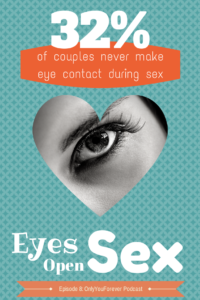
Infidelity vs. Sex Addiction: Healing from Betrayal
No audio found for this podcast.
Infidelity vs. Sex Addiction: Navigating Betrayal and Paths to Healing
When betrayal hits, the pain runs deep. It’s an experience that shatters trust and leaves individuals grappling with intense emotions and profound uncertainty. Understanding why it happened can be the first vital step toward healing. But sometimes a deeper question comes up: Is it infidelity, a heartbreaking breach of trust, or something more complex, like sex addiction? Today, we’re diving into one of the most misunderstood topics in relationships to help bring clarity to your situation.
As licensed counselors, we approach this delicate subject with profound compassion and a non-judgmental stance, recognizing that this information may be encountered by both those who have betrayed and those who have been betrayed, often during a very fragile and intense moment in their relationship history. Our aim is to provide educated, understandable, friendly, and empathetic guidance.
This discussion will address some of your toughest questions, including:
- What are the key differences between infidelity and sex addiction?
- What are the signs and symptoms of sex addiction?
- I just found out about my partner’s affair: how do I know if this is a one-time thing or the start of an addiction?
- What role does pornography play in infidelity and sex addiction?
- Are there assessments for sex addiction that I can use and trust?
Let’s get into it.
Understanding Infidelity vs. Sex Addiction: Key Differences
One of the most common questions we hear is, “How do I know if this is infidelity or addiction?” When a couple is grappling with a recent discovery or disclosure, it can be incredibly challenging to differentiate between these two distinct patterns of behavior. While both involve sexual acting out outside of a committed relationship and cause immense pain, their underlying drivers and characteristics differ significantly.
Defining Infidelity
At its core, infidelity is defined as sexual activity with someone other than a primary romantic partner or spouse. It’s important to clarify that today’s discussion focuses specifically on sexual infidelity, not emotional affairs. While emotional affairs are undoubtedly a profound betrayal and cause deep hurt, they do not fall under the clinical definition of sexual infidelity, which specifically involves sexual behaviors.
Infidelity can manifest in various ways: it might be a single, isolated incident, or it could involve multiple extramarital partners, either serially or even simultaneously. The complexity increases when, for instance, an affair partner is also a sex trade worker, or if a long-term, even decade-long, secondary relationship or “second family” scenario exists. Even in such severe cases, the behavior can still be classified as infidelity if certain key elements of addiction are absent.
Defining Sex Addiction
Sex addiction, in contrast, is characterized by a recurrent failure to resist sexual impulses. The most crucial differentiator here is the concept of impulse control, or rather, the lack thereof. This isn’t just about having sex multiple times with an affair partner; it’s about a high level of spontaneity, impulsiveness, and uncontrollability surrounding the sexual activity. The individual feels compelled to act despite a desire to stop.
Core Differentiators Between Infidelity and Sex Addiction
- Impulse Control: This is paramount. With sex addiction, there’s a profound lack of impulse control, where the individual feels driven by compulsive urges. In infidelity, while there’s a choice made to betray, it typically doesn’t exhibit the same level of uncontrollability.
- Escalation Over Time: Infidelity might deepen emotionally over time, but sex addiction often involves an escalation in the intensity, frequency, and risk of the sexual behaviors. This can mean progressing from one type of acting out to another, or engaging in increasingly dangerous scenarios.
- Variety of Behaviors: Sex addiction typically presents a wider variety of sexual behaviors compared to a more contained affair. While an affair might involve different positions or locations, sex addiction can encompass diverse scenarios like encounters with paid sex workers, anonymous hookups, voyeurism, exhibitionism, or extensive use of pornography, even if these don’t involve a traditional “affair partner.”
- Desire to Stop vs. Continue: This can be particularly hard for betrayed partners to hear, but it’s a key distinction. Individuals struggling with sex addiction often express a persistent, genuine desire to stop their behaviors, experiencing profound remorse and shame after acting out, only to find themselves repeating the cycle due to compulsion. Affairs, however, often involve a persistent desire to continue the relationship with the affair partner, driven by a fantasy or idealized projection of that person.
- Motivation and Underlying Issues: The motivation for an affair is typically emotional and tied to current relationship dynamics or personal unmet needs. Sex addiction, on the other hand, is generally driven by deeper attachment issues and unresolved trauma. While trauma can certainly play a role in someone’s propensity for affairs, its severity and direct link to the compulsive behavior are typically more pronounced in sex addiction.
- Scope of Harm: While infidelity causes immense emotional harm primarily to the betrayed partner, sex addiction often brings a wider array of severe consequences to the individual acting out. This can include significant financial ruin (hundreds of thousands of dollars spent), sexually transmitted diseases, legal issues, or physical dangers due to engaging in risky scenarios. An affair, while devastating, often occurs in a comparatively “contained” scenario.
It is crucial to state that none of this comparison minimizes the pain of infidelity. The betrayal, whether it’s an affair or sex addiction, causes profound suffering. The purpose of differentiating is to understand the nature of the problem, which guides the path to effective healing and recovery.
Recognizing the Signs and Symptoms of Sex Addiction
Building on the core differentiators, let’s explore the specific signs and symptoms that characterize sex addiction. Much of our understanding in this area draws from the pioneering work of Patrick Carnes, a foundational figure in sex addiction research and treatment.
This will repeat some of the information given above, but for the sake of clarity, we will repeat and build on that. The following indicators are often present in patterns of compulsive sexual behavior:
- Lack of Impulse Control: As mentioned, this is a hallmark. The individual repeatedly fails to resist impulses to engage in sexual behaviors, even when they desire to stop.
- Wider Variety, Greater Risks, Longer Period: The pattern typically involves diverse sexual behaviors, often escalating in intensity, frequency, and the risks taken (financial, physical, legal, social) over a longer period, sometimes even a lifetime. Rarely, sex addiction can manifest suddenly due to significant physiological changes, such as starting testosterone supplements, leading to unexpected compulsive behaviors.
- Repeated Unsuccessful Attempts to Stop: Individuals often make numerous earnest attempts to stop, reduce, or control their sexual behavior, only to relapse. This chronic relapsing cycle is a clear sign of addiction.
- Inordinate Time Spent: A significant amount of time is dedicated to obtaining sex, engaging in sexual activity, or recovering from sexual experiences. This preoccupation can consume a person’s life, far beyond what might be considered “steamy” in an affair.
- Extensive Preoccupation: There’s a persistent and consuming preoccupation with sexual behavior, sex, or preparatory activities (e.g., planning, fantasizing, seeking opportunities).
- Continued Behavior Despite Negative Consequences: A defining characteristic of any addiction is continuing the behavior despite clear knowledge of persistent or recurring social, financial, psychological, or physical problems caused by it. While an affair has profound consequences for the relationship, sex addiction often brings direct, severe, and personal harm to the individual’s life outside the relationship as well.
Is It a One-Time Affair or the Start of an Addiction?
This question, born from fear and pain, is deeply unsettling for those who have just discovered their partner’s affair. The honest answer is: you don’t really know for certain at first. However, we can offer insights to help you understand the probabilities and potential directions.
In many cases, it may indeed be “just” an affair. We use “just” not to minimize the devastating pain, but in the context of differentiating it from the complexity of addiction. Statistically, infidelity is more common than sex addiction. General social surveys indicate that 20-25% of married men and 10-15% of married women admit to having sex outside their marriage over their lifetime. Among younger adults (in their twenties), women report higher rates, closer to 20%. Some broader definitions of infidelity, including any sexual interaction that could jeopardize or hurt the relationship, push women’s rates even higher to nearly 20% across all ages. Overall, approximately one-quarter of all marriages will experience infidelity at some point.
Conversely, sex addiction is estimated to affect about 10% of the population, and this figure often excludes individuals whose primary compulsive behavior is pornography. Therefore, statistically, it’s rarer to be married to a sex addict than to someone who has committed an act of infidelity.
When to Suspect Sex Addiction
Consider the possibility of sex addiction if:
- Extensive Premarital History: Your partner had a history of excessive or compulsive sexual activity prior to your marriage, and this behavior was never addressed through counseling or recovery work. The affair you’ve discovered could be a relapse in an ongoing pattern.
- Undisclosed History: Your partner’s sexual history before marriage was never fully disclosed, and upon reviewing it now (in the context of shattered trust), you begin to see patterns that suggest compulsivity or excess.
- Sudden Physiological Changes: There were significant, sudden physiological changes, such as starting testosterone supplements, that coincide with a rapid onset or escalation of previously uncharacteristic sexual behaviors.
If these factors are not present, and there is no other evidence to suggest an underlying compulsive pattern, you are most likely dealing with infidelity rather than sex addiction. However, the initial phase after discovery involves immense uncertainty. If your partner has been secretive, trust is shattered, making it incredibly difficult to accept their honesty. This period requires a painful bearing of uncertainty as you gather more information and observe their willingness to be transparent and engage in healing.
The Role of Pornography in Infidelity and Sex Addiction
Pornography use is a frequent concern for partners navigating betrayal. From a moral standpoint, many individuals view pornography as unhelpful and potentially damaging. Clinically, however, our approach to treatment focuses on the compulsive nature of its use and the desire to stop.
Pornography and Sex Addiction
In our practice, we view pornography addiction as a subset of sex addiction. While not every person who uses pornography compulsively is a “sex addict” in the broader sense, it’s rare to find a sex addict who does not use pornography. For many sex addicts, pornography acts as a powerful accelerant, “throwing gas on the fire” of their compulsive behaviors.
We’ve observed cases where pornography use has sparked curiosity that escalated into infidelity, and where pornography addiction itself has intensified into broader sex addiction. However, it is crucial to clarify a common misconception: from our clinical experience, the vast majority of individuals addicted to pornography in committed, monogamous relationships never have an affair.
Addressing the “Boundary Breaker” Myth
When trust is shattered by the discovery of pornography use, it’s natural for the betrayed partner to assume the worst: “If you broke this boundary, you must have broken them all. If you look at porn, you must also have affairs.” This understandable fear stems from a place of deep hurt and a desire to make sense of the betrayal.
However, many individuals with pornography addiction establish internal boundaries (e.g., specific content they’d never view, places they’d never watch porn) that, paradoxically, help them justify and contain their use. Comments like, “I would never have an affair,” are often spoken with a hope for affirmation. While these boundaries exist, it’s important for the recovering individual to understand that such rationalizations are part of the addiction’s justification. While it may be true they haven’t had an affair, their pornography use alone still constitutes a profound betrayal to their partner.
So, while it is very common to have pornography use without infidelity, and less common to have both, the presence of both doesn’t automatically equate to sex addiction. Each behavior needs to be assessed within its own context, weighing the signs of addiction.
The Role of Alcohol
It’s important to also address the role of alcohol. In both infidelity and sex addiction, alcohol can act as a significant disinhibitor. We frequently find that alcohol use was a precursor to or part of the “acting out” process, lowering inhibitions and making it easier for individuals to engage in behaviors they might otherwise resist. For infidelity, this means grappling with the role alcohol plays in future fidelity and triggers for the spouse. For sex addiction, it highlights the potential for comorbidity with other addictions, requiring vigilance to prevent “addiction switching” (e.g., from sex to food, exercise, or shopping) during sobriety.
Reliable Assessments for Sex Addiction
If you’re wondering whether you or your partner might be struggling with sex addiction, it’s natural to seek out reliable tools for assessment. While the internet offers many quizzes, it’s vital to differentiate between quick self-tests and professionally validated instruments. We’ll outline three types of assessments: an easy screening, a more serious self-report, and a professional-level diagnostic tool.
1. The PATHOS Questionnaire (Easy Screening)
PATHOS is a short, six-question acronym-based questionnaire developed by Patrick Carnes et al. in 2012. It serves as a preliminary screening tool:
- Preoccupied: Do you often find yourself preoccupied with sexual thoughts?
- Ashamed: Do you hide some of your sexual behavior from others?
- Treatment: Have you ever sought help for sexual behavior you did not like?
- Hurt others: Has anyone been hurt emotionally because of your sexual behavior?
- Out of control: Do you feel controlled by your sexual desire?
- Sad: When you have sex, do you feel depressed afterwards?
A threshold of three or more “yes” answers is typically considered a positive screen. However, this questionnaire has limitations. For example, a person with a healthy libido and strong moral values could potentially score high due to feelings of shame or preoccupation, even without a sex addiction. If you are applying these questions to a partner who has engaged in extensive sexual activity, their distress and desire to do penance after discovery could lead to an unfairly high score, mislabeling them as a sex addict when it might simply be severe infidelity. While it’s too short for a definitive diagnosis of sex addiction, scoring 4-6 on PATHOS might warrant further investigation.
2. The SAST-R (Sexual Addiction Screening Test – Revised)
The SAST-R is a more comprehensive 20-question “yes/no” assessment that can be found and completed online. Individuals who are not sex addicts typically score 2 or 3, indicating that a few “yes” answers are normal and not cause for immediate alarm. The clinical threshold for differentiation between non-addicts and those likely to need sex addiction treatment is typically six or more positive answers.
For those in outpatient sex addiction treatment, the average score is around 10, while for inpatient treatment, it’s usually around 13. While accessible online, there are important caveats for interpreting SAST-R scores:
- Religious Values: Strong religious values, combined with recent discovery of infidelity, or shame, can lead to higher scores. An individual might answer “yes” to questions about temptation or thoughts, not actual behaviors, due to a heightened conscience, making their score reflect more about their internal moral struggle or desire for penance than their actual addiction level.
- Self-Report Bias: As a self-report test, scores can be influenced by the individual’s denial or self-perception at the moment. A sex addict in deep denial might genuinely under-report their behaviors, believing they are not “that bad.” Conversely, someone desperate to “fix” themselves after being discovered might over-report to ensure no aspect of their behavior is overlooked.
If you or your partner score at or above the threshold of six, we strongly recommend seeking a certified sex addiction therapist (CSAT) for professional evaluation. This test is a helpful tool to initiate that conversation and determine if deeper issues are at play, providing a foundation for rebuilding trust by demonstrating sincerity in recovery.
3. The SDI (Sexual Dependency Inventory)
The SDI is considered the “grand-daddy” of professional-level assessments for sex addiction. It is an extensive, grueling assessment that takes 1.5 to 2.5 hours to complete, often a composition of several longer assessments, including the SAST. The SDI provides a highly thorough picture of an individual’s sexual history, attachment patterns, compulsions, and trauma issues, examining both present and past behaviors.
This tool is exclusively available through CSATs in a clinical setting because its interpretation requires professional expertise and it is an integral part of a larger treatment plan. It is never used to evaluate infidelity in isolation; it is reserved for situations where sex addiction is clearly suspected. Due to its deeply intimate and personal nature, delving into topics like childhood sexual abuse, the SDI results are almost never shared outside of the clinical notes with either the individual or their partner. It serves as a powerful clinical tool to expedite understanding of a client’s history, rather than a diagnostic label to be handed out.
Assessing Infidelity: What Information is Helpful?
For the betrayed partner, the longing for information about an affair can be overwhelming. You want to understand the “underground cavern” of secrets, to grasp the full extent of the harm and to reclaim a sense of knowing. However, while information is important, not all information is helpful for healing.
We’ve found that getting every graphic detail about an affair—such as sex positions, comparisons to one’s own body, or intimate dialogue—can be profoundly re-traumatizing. Once heard, these images and details cannot be “un-rung,” often creating intrusive thoughts and lasting pain that impede healing.
Instead, we strongly recommend focusing on the essential data that supports healing and future safety:
- Who was the affair partner(s)?
- Where did the meetings or sexual activity take place?
- When did it happen, and how often?
This crucial information can validate a betrayed partner’s internal wisdom or historical suspicions, clarify boundaries for future fidelity, and inform the recovery process without causing unnecessary re-traumatization. Healing comes through feeling and processing the pain with support, not through an exhaustive catalog of harmful details. An experienced trauma therapist specializing in betrayal trauma can guide you through this process effectively.
Hope and Healing After Betrayal
The journey through infidelity or sex addiction is undoubtedly one of the most challenging experiences a relationship can face. However, it’s vital to hold onto hope. We have witnessed countless individuals and couples find their way through this pain to profound healing and stronger, wiser relationships.
- Betraying partners can become faithful.
- Individuals struggling with sex addiction can achieve well-established sobriety.
- Those impacted by pornography addiction can find recovery.
- Betrayed partners can heal from betrayal trauma and learn to trust again from a more intuitive and discerning place, based on reliable behavior observed over time.
This repair work is challenging, but it is possible. While not every marriage survives the devastation, for those who choose to stay and heal, professional support is available. You are not alone in this journey. If you find yourself grappling with these challenges, reach out. There is help in understanding, in sorting it out, and in wading through the pain to emerge on the other side.
Podcast: Play in new window | Download
Thanks for listening!
If you found this episode helpful, don’t forget to subscribe, leave a review, and share it with someone who might benefit.
Let’s keep the conversation going—because growth starts here!
Need Support Now?
Talk to Someone Today


 June 23, 2025
June 23, 2025 


